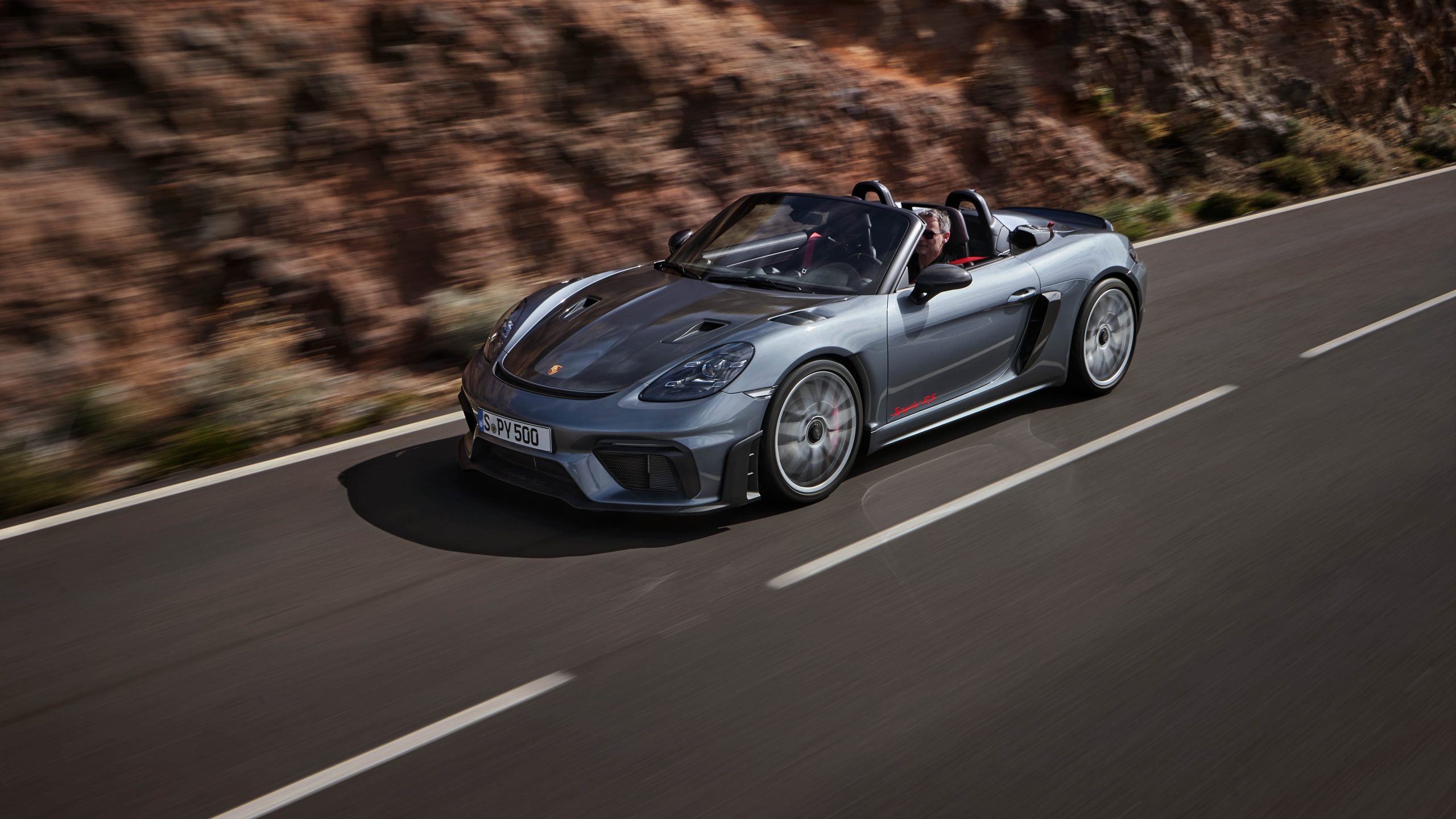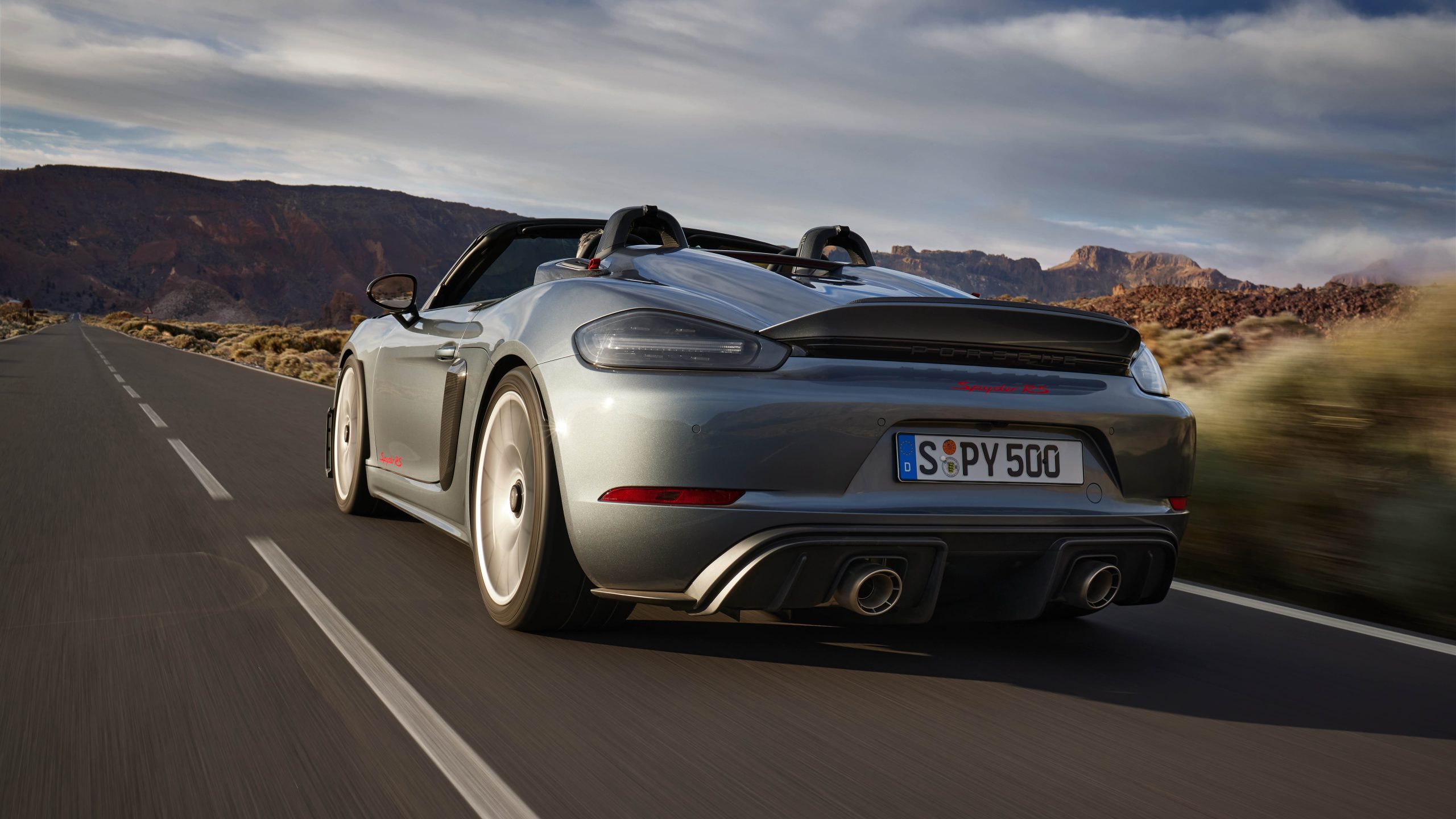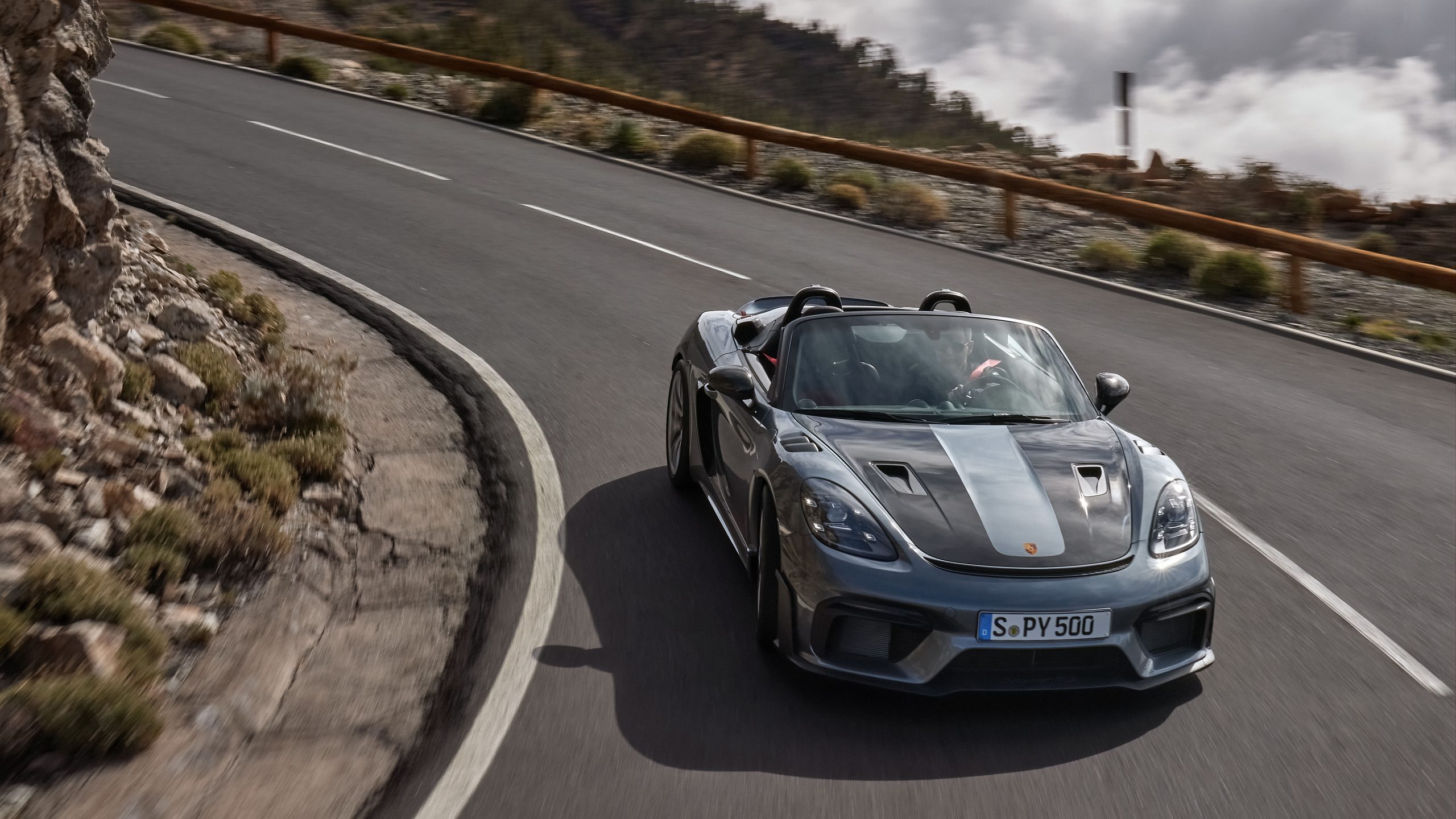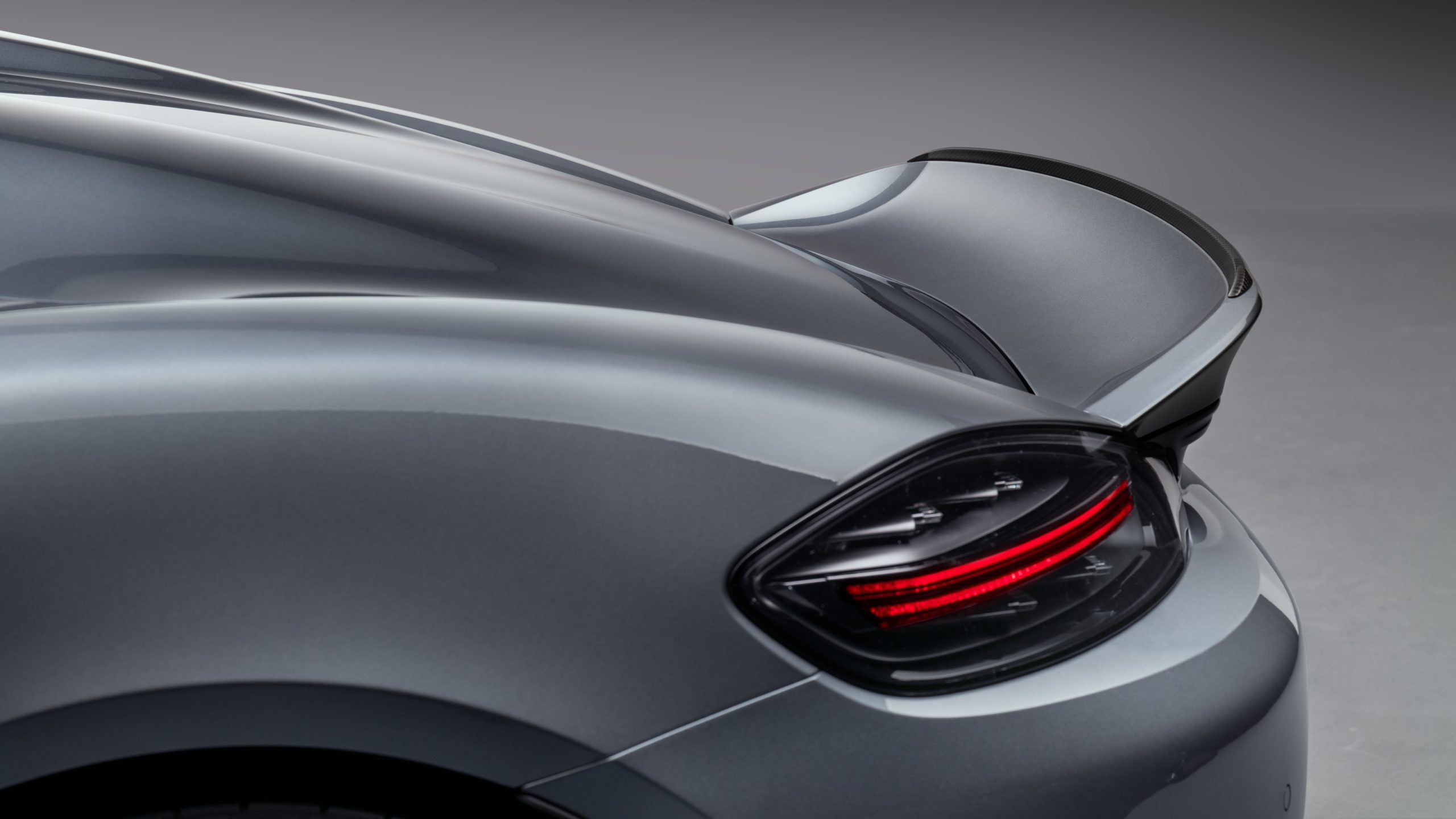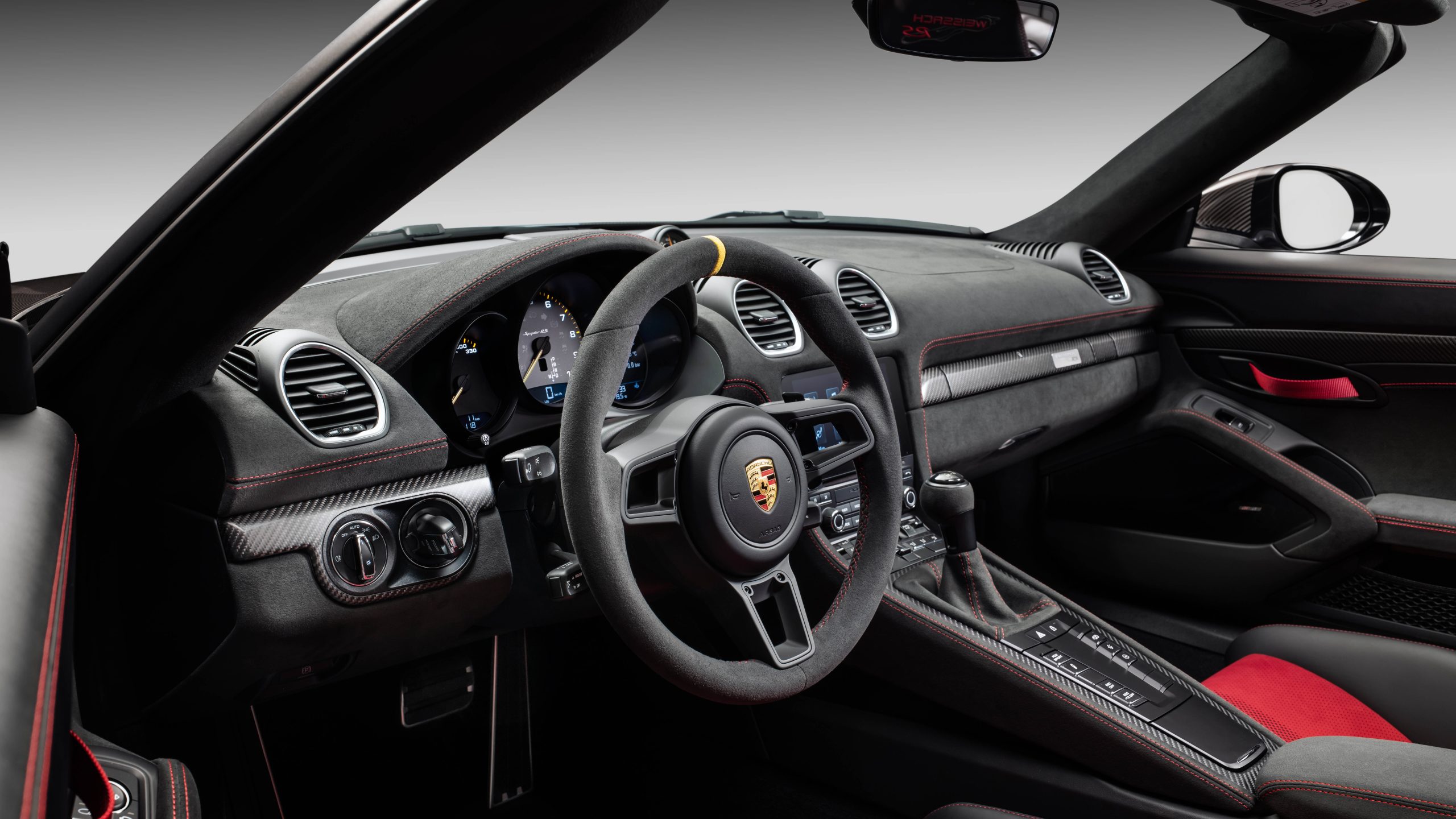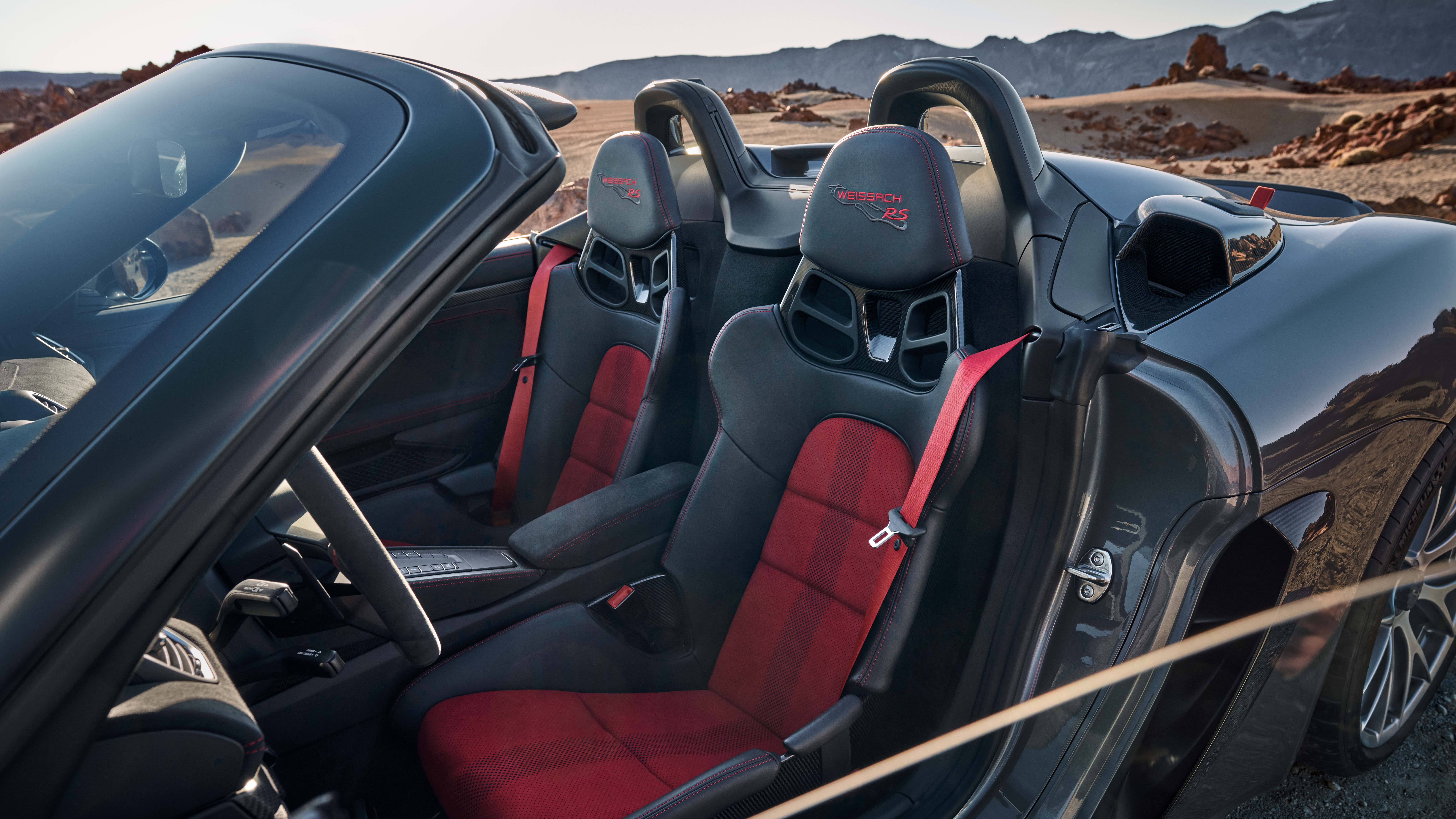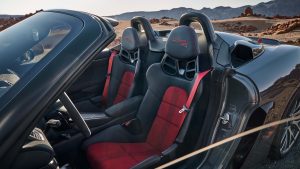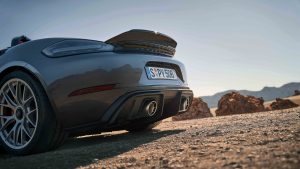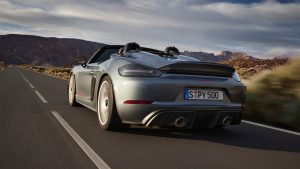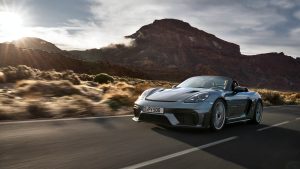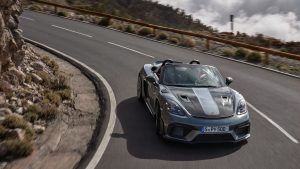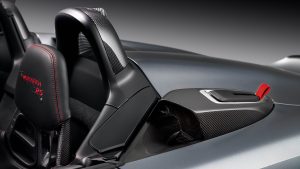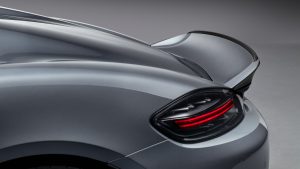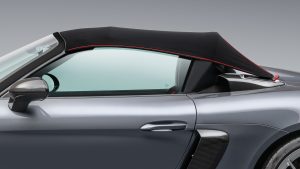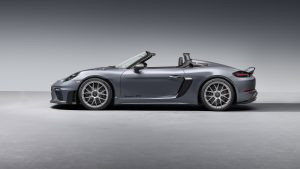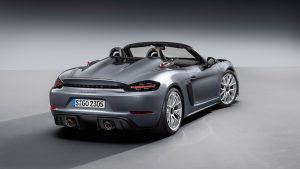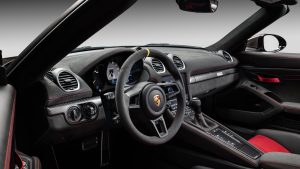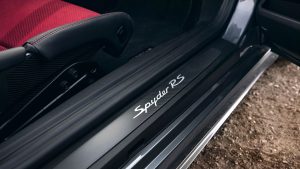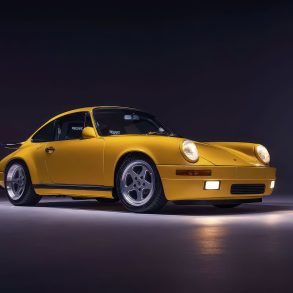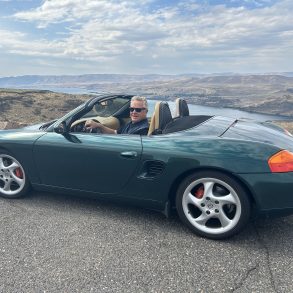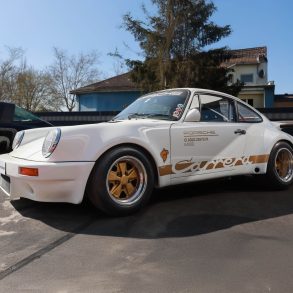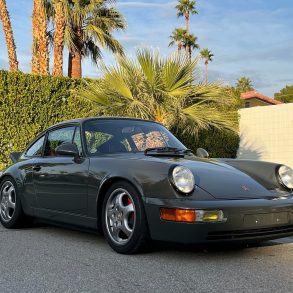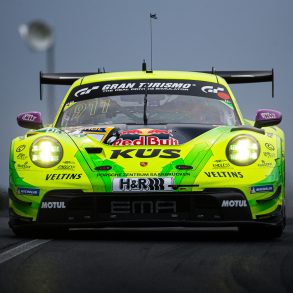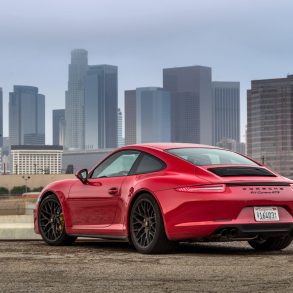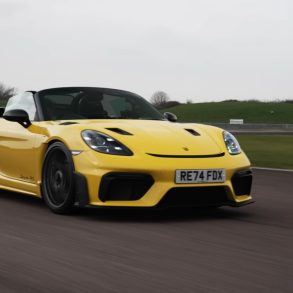Porsche 718 Boxster Spyder RS – Ultimate Guide
Official photos: 2023 May 10 / Premiere: Sometime in June, 2023 / Market launch: Spring 2024
The 982 generation has been perhaps one of the best series of models that Porsche has put forward, as you do not attach the model number of one of your first out-and-out race car models on a whim. To be named as 718s, these models needed to be the epitome of the mid-engine coupe and open top concepts, with handling, performance, design, and aesthetics all laser focused and razor sharp. However, this had to balance against the 718s being affordable, attainable sports cars that were every bit as Porsche as any other car in the whole lineup.
Of course, with a platform as superb as the 982 generation to build from, it wasn’t long before Porsche’s GT department got involved. From that performance-oriented department, the 718 Boxster Spyder and the Cayman GT4 both emerged, at the time of their releases in 2019 and 2020 the top of the 718 range. Two years after the GT4’s release, however, a model deserving of the RennSport designation was also released, the 2022 718 Cayman GT4 RS. Rumors began swirling around even then that there was another RS model in the shadows, quietly being worked on by the mad scientists that make up Porsche’s performance department.
Word began to spread in March and April of 2023 that the next RS might very well be a Boxster, and the rumor mill went into overdrive. Was it going to be a new evolution of the Boxster GTS? Was it going to be a Spyder? What engine would this new car bring with it? Was it going to be turbocharged like most of the 718 lineup? Could it even potentially be a hybrid?
On May 10, 2023, only a couple of hours ahead of the official release by Porsche, the name and some specifications leaked to the motoring press. The new car was to be the 718 (982) Spyder RS, and because some of the specs that leaked seemed too good to be true, it was thought that the leaked information may have been incorrect. The wait to find out wasn’t long, however, as Porsche revealed the Spyder RS to the world, and many jaws subsequently scraped many floors.
Porsche, despite what some might say, really does have the pulse of their customers. Those that want an efficient, comfortable, and sporty roadster have all the models of the Boxster to pick from, while those wanting to get some fun runs in on the weekends had the GTS and Spyder versions to pick from. Yet, there were customers that wanted a Boxster that was the definition of Porsche engineering perfection, of form and function in perfect balance, a roadster that could cut an apex so tightly while also accelerating like a race car out of the corner, howling down the road to the next corner, eagerly anticipating the chance to attack.
That is where the Spyder RS, in development ever since the original 718 Spyder released in 2019, comes in. Using input from the Motorsports division, as well as thousands of hours of simulation, test cars, wind tunnel, and Nurburgring Nordschleife data, this car realizes that original concept for the 982 generation, the concept that earned the series the 718 name, as it is truly the closest that Porsche has come to a racing roadster for the road in many years. One of the biggest parts of that, as it is with many Porsche models, is the engine that is hidden in the middle and low down…
Engine & Performance
Specifications:
- Engine Type & Size: Flat-6 4.0L Naturally Aspirated
- Horsepower: 493 hp
- Torque: 331 lbs-ft
- Redline: 9,000 rpm
- 0-60 mph: 3.2 seconds (PDK)
One of the specs leaked that was relatively hard to believe was just how powerful the new Spyder RS was. There were thoughts that surely, this new RS model couldn’t possibly have 500 PS (493 HP), as that was an absurd number. Even the 718 Cayman GT4, which shared its engine with the 718 Spyder, had 414 HP and that was quick enough. Surely, they wouldn’t give the Spyder RS the same engine as the Cayman GT4 RS?
To put it simply, that is precisely what they did. Originally derived from the Type 992 911 GT3 and shared in the GT3 Cup race car, which itself took the engine from the Type 991.1 GT3 RS, the 4.0 liter flat-six is the most powerful engine ever fitted to a regular series production roadster from Stuttgart with 493 HP and 331 lbs-ft of torque, all of it going through the rear wheels. Crafted and assembled on the same production line that makes the motorsports engines for Porsche customer teams, it features six independent throttle bodies and butterfly valves, titanium connecting rods, forged alloy pistons, stainless steel and inconel exhaust headers, a forged steel crankshaft, and that’s just the tip of the iceberg. One could write a 20 page book on the engine alone!
Much like with the 911 GT3 and the Cayman GT4 RS, the single most important reason that the Spyder RS has a naturally aspirated engine is response. Even with the high-tech modern turbos in things such as the Type 992 911 Turbo S, there is that little bit of lag as the turbo spools up, and for a laser scalpel meant to be the ultimate roadster, that simply wouldn’t do. When the driver of a Spyder RS puts their foot down, the response is instant. It’s that primal instinct in the back of your mind, that bit deep down that is ready to fight or flee in an instant, except in Porsche’s case, they have simply crossed out the “Flee” side of that debate.
This instant response and massive power will simply catapult the 718 Spyder RS down the road to 60 MPH from a dead stop in 3.2 seconds, and to 124 MPH in just 10.9 seconds, all the way to its top speed of 191 MPH. To put that into perspective, that means that this little monster roadster will out-accelerate the very car that it takes its engine from, the Type 992 911 GT3, by 0.2 seconds to 60. It is only a hair slower than the Type 992 GT3 RS, and just about matches a Taycan Turbo, which has all of its power available at 0 RPM, in a pure drag race.
This astonishing time is partly down to the all-new version of Porsche’s PDK dual-clutch transmission. It would have been simple enough to just bring across the unit from the Cayman GT4 RS, but because of the difference in aerodynamics and intended usage, a new set of gear ratios, short and close together, were crafted instead. This was to ensure that after a driver reaches the apex of the corner they are carving, they can simply put their foot down and move up the gears as the car digs in and launches down the road to the next corner. It also helps that the gear changes are now so fast that they are seamless, in the realm of at or under 50 milliseconds.
Chassis & Handling
The chassis of the 718 Spyder RS is probably the least changed thing between this model and the “regular” 718 Spyder, as they are both built on that exceptionally well engineered platform. However, the RS features a derivative of the Cayman GT4 RS’s suspension, meaning that it features a 30mm drop over the regular Spyder, ball-joint suspension bearings, as well as Porsche Active Suspension Management with the Sport Calibration Pack included. This gives it much more aggressive toe and camber, with adjustable anti-roll bars, all controlled from the driver’s suspension management decisions. However, compared to the GT4 RS, the damper and recoil settings are softer, so that while it feels raw and connected to the road, it will also smooth out the bumps and cracks of the road so you can keep going all day long. The system also features a front lift system that will raise the nose of the car 1.1 inches, at speeds of up to 37 MPH.
Perhaps the biggest difference over the regular Spyder, however, is that the Spyder RS also gains Porsche Torque Vectoring. While on the surface that may not seem like a big deal, the fact of the matter is that only the Cayman GT4 RS and the Spyder RS have mechanical limited slip differentials, and then to have the torque vectoring to ensure all the power that comes from the beast of an engine within the car gets to the road makes this one of those cars that is truly special.
The 718 Spyder RS features 20 inch wheels all around, and while the full OEM features have not been released at the time of this writeup, with looking at past range-topping models, they will likely be dressed in Michelin Pilot Sport Cup 2’s.
Also important to note is that the Spyder RS, through careful design and engineering, and the expanded use of carbon fiber, is a full 14 lbs lighter than the Spyder, and a full 36 lbs lighter than the standard 718 Boxter.
Aerodynamically the Spyder RS is a much more surgical tool for corner carving than even the 718 Spyder. The front aero, including the splitter, front bumper, hood, and air intakes are all based on the Cayman GT4 RS’s front end, including sideblades on the outer edges of the bumper to increase downforce for front end grip. The hood is made of carbon-fiber reinforced polycarbonate (CFRP), and features two NACA ducts that feed directly to the front brakes. The lip spoiler doesn’t jut out as far as the GT4 RS’s yet is still able to produce nearly as much downforce. As a result, the front end feels planted and reliable grip is maintained.
Out back, instead of a full wing like with the GT4 RS, the Spyder RS features a tonneau cover with aerodynamically functional buttresses behind each seat. On the outer edges of these, “combustion” scoops intake the extra air that the engine needs for cooling, as the side scoops of the car are split, with the top section feeding air to the engine, and the bottom section being used for rear brake cooling. All of this is tied together with what Porsche label as a “tear-off edge” that is shaped like a ducktail, which produces real downforce to shove the rear wheels into the road.
All of this leads to a car that is predictable in its handling, while also being extremely neutral and agile. While the steering features an electro-hydraulic assist, it will pull back the assist after about 10 to 15 MPH, so that more of the road feel can be transmitted to the driver. As Porsche state themselves, the entire suspension and aero design is focused entirely on “maximum driving pleasure on winding roads.”
Design, Styling, & Interior
Porsche took a pragmatic approach to the interior of the 718 Spyder RS. Like its little brother, the RS features a completely stripped back interior, with only the essentials needed for driving and controlling all the included systems added. The steering wheel is wrapped in grippy Race-Tex with a 12 o’clock hatch mark. The standard sport bucket seats have the primary shell made out of CFRP with exposed carbon-weave, and offer bolstering that would not be out of place in a race car. These seats are finished in black leather for the bolster covers and headrest, with Race-Tex centers in contrasting colors.
The dashboard trims are covered in leather, and “Spyder RS” logos are featured on the door kick-plates and the headrests of the seats. The motorsports heritage that is being celebrated here is also readily apparent, with a PDK shifter low into the center console with very short actions, supported by two paddle shifters behind the wheel that are tactile and solid when actuated. However, modern day convenience is also at the forefront, with Porsche Communication Management as standard in the car, as well as handsfree calling, a stereo system that connects to bluetooth, and even satellite navigation.
However, if you want the 718 Spyder RS to be as raw and driver focused as possible, it will launch in 2024 with a Weissach Package as an option.
Selecting the Weissach Package when ordering will bring with it an immediate reduction in weight even further, as the alloy wheels will be replaced with forged magnesium ones. The Sport Exhaust system made from titanium replaces the stainless steel regular exhaust, with a design inspired by the limited edition 2018 935 911. The interior will also have all leather on the dash removed and replaced with lightweigh Race-Tex, which is also anti-glare by its nature.
Other touches with the Weissach Package are the subtly changed logos going from Spyder RS to Weissach RS embroidered into the leather of the headrests, and the ducktail spoiler getting a carbon fiber Gurney flap at the top. The “combustion” air scoops will also be replaced with ones made of carbon fiber, and the sideblade intakes will be finished in exposed carbon fiber weave, as will the hood.
Performance & Specifications Summary
Model & Pricing Info
| Make | Porsche |
| Model | 718 Boster Spyder RS |
| Generation | 982 |
| Car type | Convertible |
| Category | Limited Series Production Car |
| Built At | Stuttgart, Zuffenhausen, Germany |
| Introduced | 2024 |
| Base Price (USD) | $160,700 |
Chassis, Suspension & Powertrain
| Dry Weight | 3,108 lbs |
| Layout | Mid-engine, Rear-wheel Drive, 2-door Roadster Convertible |
| Body / Frame | Unitary Steel & Aluminum Monocoque w/ CFRP Hood |
| Suspension (F) | MacPherson Struts w/ Gas-Pressure Dampers, Anti-Roll Bar |
| Suspension (R) | Transverse Control Arms w/ Coil Springs over Gas-Pressure Dampers, Anti-Roll Bar |
| Brakes | 380 mm Brake Rotors w/ 6-piston calipers (front), 4-piston calipers (rear), Optional PCCB |
| Tires | Unknown, expected: Michelin Pilot Sport Cup 2 tires |
| Transmission | 7-Speed PDK Dual-Clutch Semi-Automatic |
Engine, Output & Performance
| Engine | DOHC 24-valve flat-6, aluminum block & heads, direct fuel injection |
| Displacement (Liters) | 4.0L |
| Position | Mid-engined, Longitudinal |
| Aspiration | Naturally Aspirated |
| Power (hp) | 493 HP |
| Power (hp) / liter | 123.25 hp / liter |
| Power (hp) / weight | 0.35 hp / kg |
| Torque | 331 lb-ft |
| 0-60 mph time | 3.2 seconds |
| 0-124 mph time | 10.9 seconds |
| Top Speed | 191 MPH |
| Fuel Economy (combined / city / highway) |
Unknown / Unknown / 18.3 MPG |
Pictures
Official Press Release
Porsche crowns the 718 mid-engined model line with a sports car designed for maximum driving pleasure: the new 718 Spyder RS is the open-top counterpart to the 718 Cayman GT4 RS. For the first time, the 368 kW (500 PS; 718 Spyder RS: Fuel consumption* combined (WLTP) 13.0 l/100 km, CO₂ emissions* combined (WLTP) 294 g/km,911 GT3: Fuel consumption* combined (WLTP) 12.9 l/100 km, CO₂ emissions* combined (WLTP) 293 g/km) naturally aspirated six-cylinder boxer from the 911 GT3 features in an open-topped mid-engined sports car. The same lightweight power unit with its high-revving design also powers the Porsche 911 GT3 Cup racing car. The exceptionally lightweight and purist-pleasing manual soft-top roof of the 718 Spyder RS makes the highly evocative sound of the engine an even more compelling experience. The effect is further heightened by the standard lightweight stainless steel sports exhaust system and the distinctive process air inlets on the sides behind the headrests.
High-revving naturally aspirated engine and resolutely lightweight construction
The powertrain of the new 718 Spyder RS is identical to that of the 718 Cayman GT4 RS coupe. The six-cylinder boxer engine, with its cylinder displacement of 4.0 litres, revs up to 9,000 rpm and generates an output of 368 kW (500 PS) and maximum torque of 450 Newton metres. Combined with a short-ratio seven-speed PDK transmission, the six-cylinder engine catapults the two-seater roadster from 0-100 km/h in 3.4 seconds. The car hits the 200-km/h mark in just 10.9 seconds. Compared to the 718 Spyder without the ‘RS’ designation, the new range-topper not only benefits from an additional 59 kW (80 PS), but also accelerates to 100 km/h half a second faster. The top speed is now 308 km/h instead of 300 km/h.
Like every modern RS model, the new 718 Spyder RS is available exclusively with the Porsche dual clutch transmission (PDK). This gearbox shifts through its seven gears at lightning speed and guarantees maximum performance. The gearshift paddles allow drivers to keep their hands on the steering wheel even when shifting gears manually. Alternatively, the driver can use the ergonomically designed selector lever on the centre console. In addition to the more powerful engine, the new model’s lower weight also contributes to better performance: at 1,410 kilograms, the Spyder RS weighs 40 kg less than the 718 Spyder with PDK and is actually five kilograms lighter than the closed 718 Cayman GT4 RS. The Spyder RS represents the latest high-water mark of the model line started in 2016.
Balanced aerodynamics
The front end of the new Porsche 718 Spyder RS is almost identical to the front end of the 718 Cayman GT4 RS. The standard front bonnet is made of CFRP and features a wide air outlet above the bumper. The two NACA ducts enhance brake cooling without adversely affecting the Cd value. Sideblades on the outer ends of the bumper increase downforce. The front spoiler lip is slightly shorter than on the 718 Cayman GT4 RS, which in conjunction with its large rear wing produces higher overall downforce on the Cayman and therefore requires a larger spoiler lip to achieve aerodynamic balance. Instead of a wing, the 718 Spyder RS features a striking tear-off edge shaped like a ducktail. All aerodynamic components are intricately coordinated. They maintain the car’s aerodynamic balance and ensure maximum driving stability at high speeds.
Purist soft-top design
The new 718 Spyder RS comes with a manually operated single-layer lightweight soft-top. The design is amazingly compact, consisting of two parts: a sun sail and a weather deflector. Both are completely removable and can be stowed together or singly in the vehicle. The sun sail alone can also be used as a ‘Bimini top’, thereby protecting the driver and front passenger from intense sunlight. In this case, the passenger compartment remains largely open to the side and behind the passengers.
Together with the weather deflector, this creates a complete top that provides effective protection against rain when the side windows are raised. The entire roof, including mechanical parts, weighs just 18.3 kg. That’s 7.6 kg less than the 718 Spyder and 16.5 kg less than in the 718 Boxster. Drivers who wish to shave an additional eight kilograms from the weight of the vehicle can leave the top at home entirely, weather allowing.
Sports suspension of the highest precision and agility
The chassis of the 718 Spyder RS uses components from the 718 Cayman GT4 RS and the 718 Spyder and is designed for maximum driving pleasure on winding roads. It comes standard with Porsche Active Suspension Management (PASM) with sports tuning and has been lowered by 30 millimetres. It also features Porsche Torque Vectoring (PTV) with mechanical limited-slip differential, ball-jointed suspension bearings and 20-inch forged aluminium wheels. The behaviour of the chassis is characterised by razor-sharp steering precision, as well as agile and extremely neutral handling. The ride height, camber, track and anti-roll bar can all be adjusted individually. Compared to the 718 Cayman GT4 RS, spring and damper rates have been reduced to achieve a more relaxed, characteristically convertible-style set-up.
Performance-focused interior
A sporty character defines the inside of the car too: the interior is reduced to the functional and ergonomic essentials. The grippy RS sports steering wheel is covered with Race-Tex and features a yellow 12-o’clock marking. The standard full bucket seats are made of lightweight CFRP in a carbon-weave finish and offer particularly impressive lateral support. The seat covers are made of black leather, while the perforated Race-Tex seat centre features a contrasting colour with a black background. The contrasting colours are Arctic Grey or Carmine Red.
A ‘Spyder RS’ logo in the corresponding colour is embroidered on the headrests. The dashboard and trims are covered with leather. Available exterior colours include four plain and three metallic paints, including the new Vanadium Grey Metallic as well as the special colours Arctic Grey, Shark Blue and Ruby Star Neo.
Optional Weissach Package and matching chronograph
A Weissach Package is also available for the Spyder RS as an option. The exceptionally lightweight, optional forged magnesium wheels can be ordered in combination with this particularly performance-focused equipment package. The sports exhaust system tailpipes here are made of titanium. The look is inspired by the limited-edition 935 from 2018. A visual highlight inside the car is the upper part of the dashboard covered with anti-glare Race-Tex. Exclusively available to buyers of the Porsche 718 Spyder RS is a Porsche Design Timepieces handcrafted chronograph – a premium-quality watch from Porsche’s in-house watchmaking operation in Solothurn, Switzerland. Designed to match the configuration of the car, the particularly lightweight case is made of titanium, the dial is made of carbon and the strap is made out of vehicle leather. The rotor on the back echoes the respective wheel rim design on the 718 Spyder RS.

“The 718 Spyder RS raises driving pleasure to a new level for open-top cars,” says Andreas Preuninger, Head of GT Cars. “The combination of our unmistakable GT3 engine, the close-ratio transmission, compact dimensions, low weight, road-optimised racing suspension and maximum openness offers an extremely compelling and unfiltered driving experience.”
The new Porsche 718 Spyder RS celebrates its public premiere in June at the festivities marking 75 years of Porsche Sports Cars in Stuttgart-Zuffenhausen. Shortly afterwards, it will make an appearance at the Goodwood Festival of Speed in England.


